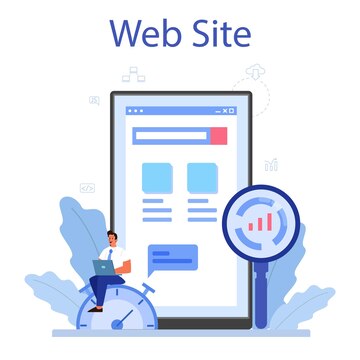Understanding Google’s Core Web Vitals and Their Impact
Core Web Vitals consist of three key metrics that focus on different aspects of user experience and page loading performance. It’s important to note that Google may update its algorithms and metrics over time, so it’s recommended to check the latest information on Google’s official documentation for the most up-to-date details. As of my last update, the Core Web Vitals include:

- Largest Contentful Paint (LCP): LCP measures the time it takes for the main content of a web page to be fully loaded. It specifically looks at the largest element, whether it’s an image, text block, or other content, and assesses how quickly it becomes visible to the user. Google’s Recommendation: Websites should aim for an LCP of 2.5 seconds or faster for a good user experience.
- First Input Delay (FID): FID measures the time it takes for a web page to become interactive. It assesses the delay between a user’s first interaction (e.g., clicking a button or link) and the browser’s response to that interaction. Google’s Recommendation: Websites should strive for an FID of 100 milliseconds or less for a good user experience.
- Cumulative Layout Shift (CLS): CLS quantifies the visual stability of a web page by measuring the unexpected layout shifts that occur during the loading process. It looks at how much content moves around on the page after it has already loaded. Google’s Recommendation: Websites should target a CLS score of 0.1 or less for a good user experience.
These Core Web Vitals are crucial components of Google’s Page Experience signals, which influence how Google ranks pages in search results. Meeting these metrics ensures a better user experience and contributes to improved search engine visibility. It’s advisable to stay informed about any updates or changes to Google’s algorithms and recommendations for Core Web Vitals.
Measuring Core Web Vitals metrics
Measuring Core Web Vitals metrics involves using various tools and techniques to assess the performance of your website in terms of Largest Contentful Paint (LCP), First Input Delay (FID), and Cumulative Layout Shift (CLS). Here’s a guide on how to measure Core Web Vitals metrics:
1. Google Page Speed Insights:
- How to Use:
- Go to Google PageSpeed Insights.
- Enter your website URL and click “Analyze.”
- Review the results, which include Core Web Vitals data and recommendations.
- Insights Provided:
- LCP, FID, and CLS scores.
- Suggestions for improvement.
2. Google Search Console:
- How to Use:
- Log in to Google Search Console.
- Select your property and navigate to the “Core Web Vitals” report under “Enhancements.”
- Insights Provided:
- Overview of how your pages perform in terms of Core Web Vitals.
- Specific issues that need attention.
3. Lighthouse in Chrome DevTools:
- How to Use:
- Open Chrome DevTools (Right-click > Inspect > Audits).
- Perform an audit and select “Performance” and “SEO” categories.
- Run the audit and review the report.
- Insights Provided:
- Detailed metrics including LCP, FID, and CLS.
- Opportunities for improvement.
4. Web Vitals Chrome Extension:
- How to Use:
- Install the Web Vitals Chrome Extension.
- Browse your website, and the extension will display real-time Core Web Vitals data.
- Insights Provided:
- Live data on LCP, FID, and CLS as you interact with the page.
5. WebPageTest:
- How to Use:
- Go to WebPageTest.
- Enter your website URL, choose a testing location, and run a test.
- Review the generated report, focusing on the “Largest Contentful Paint” and “Layout Stability” sections.
- Insights Provided:
- Detailed breakdown of loading performance, including Core Web Vitals metrics.
6. Chrome User Experience Report (CrUX):
- How to Use:
- Access the CrUX dataset.
- Query the dataset to get insights into real-world user experience metrics.
- Insights Provided:
- Aggregate data on Core Web Vitals metrics based on real user interactions.
7. Third-Party Monitoring Tools:
- How to Use:
- Insights Provided:
- A holistic view of website performance, including Core Web Vitals.
Regularly monitor and analyze these metrics using the mentioned tools to identify areas for improvement. Continuous optimization will contribute to a positive user experience and better search engine rankings.







